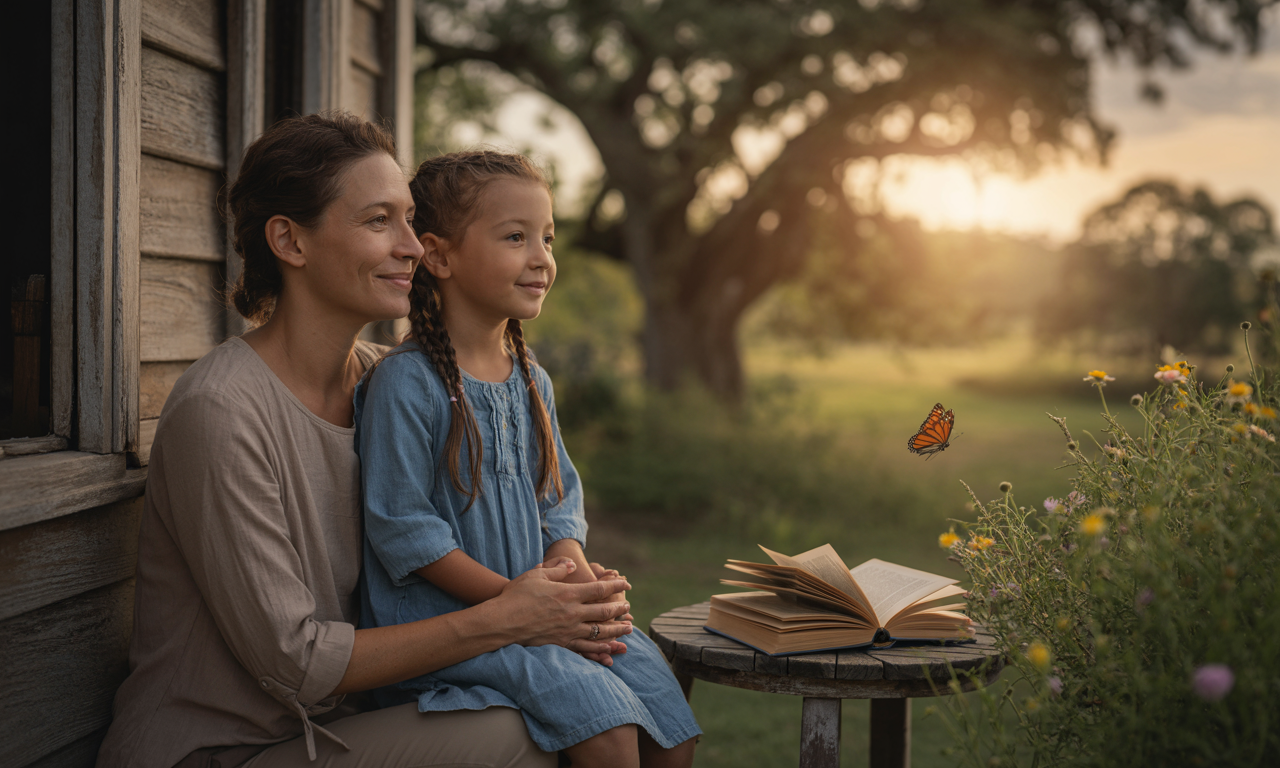When Everything Crumbles Around You
The ground dropped out beneath me on an ordinary Tuesday.
A long-term relationship that had quietly shaped how I saw myself ended. From the outside, it didn't look dramatic. But inside, it felt like everything I thought I knew about my worth, my routines, even my sense of future had disappeared.
I mistook the collapse around me for a collapse within me.
This is the story so many of us know. The moment when external structures fail and we assume we're the ones who are broken. When the scaffolding disappears and we forget that the foundation was always ours to claim.
What I learned in that rupture changed everything about how I understand trust, healing, and the gentle art of becoming whole again.
The Fragile Architecture of External Safety
In the beginning, I couldn't separate what was happening around me from what was happening within me. I'd lost the relationship, but I also stopped eating regularly, doubted every decision, second-guessed my intuition, questioned my value.
It felt like the breakup proved I was broken.
But slowly, I began to see something profound. The part of me that could observe the falling apart was still intact. The part that could cry, journal, reach out in small ways was still whole.
My internal foundation wasn't broken. It had just never been fully claimed as mine.
Research shows that approximately 70% of people experience at least one potentially traumatic event in their lifetime. What's remarkable is that about 53% of those people experience significant posttraumatic growth.
The disorientation I felt wasn't failure. It was the first real contact with myself.
Learning to Separate What's Yours From What Isn't
The shift began when I learned to slow down enough to notice what was actually mine and what wasn't.
It looked like journaling, but instead of venting or analyzing, just writing down what I felt in my body each morning. "Heavy chest." "Tight jaw." "Exhausted." That helped me stop spinning in story and start connecting with the truth of my nervous system.
It looked like saying aloud: "This is grief. Not failure." Over and over, like a mantra.
It looked like having a somatic therapist gently reflect: "Your system isn't breaking. It's recalibrating. Can you feel what's still here?"
Reclaiming my foundation meant learning that I am not what happened to me. That my worth doesn't leave when someone else does. That I could feel fear or pain and still be trustworthy to myself.
Eventually, it looked like me making small choices on my own terms: cooking a nourishing meal, going for a walk without headphones, telling the truth in conversation even if my voice shook.
With each choice, I started to feel myself again. Not as a reaction to the world, but as someone with her own gravity.
The Bridge Between Knowing and Embodying
I said "I am not what happened to me" long before I believed it. It lived in my head like a nice idea. But in my body? I still flinched. Still froze. Still tried to earn my right to exist by being useful, pleasing, in control.
The bridge between knowing and embodying wasn't a single moment. It was a pattern of moments, repeated with care.
But there was one night that marked a shift.
I had just set a boundary in a conversation that would've once terrified me. It was small: "I need to pause this for now and come back when I have more capacity." My heart was pounding. I thought I'd made a mistake, that I'd lose the connection or be punished for speaking up.
But afterward, I went for a walk. The air was cold, and I remember touching my own shoulder, just resting my hand there, like a quiet reassurance.
Something settled.
I didn't feel proud, or even safe exactly. I felt real.
And that's when it landed, not as a thought, but as a felt sense: Oh. I'm still here. I didn't disappear when I chose myself. My body stayed with me.
That was the beginning of embodiment. Not in a loud, triumphant way, but in a quiet reunion. A homecoming that had been waiting.
The Real Mechanics of Trust Rebuilding
That moment taught me that self-trust isn't built in bold declarations. It's built in the follow-through. In the way we respond to our own fear, our own shakiness.
We think trust means certainty. But what I learned is that trust means responsiveness.
That shoulder touch wasn't a performance. It was me saying to myself: I see you. I'm not leaving. No fixing. No "you're fine." Just presence.
The real mechanics of rebuilding trust looked like responding when I noticed I was dysregulated, not ignoring it. Letting myself pause, even when part of me screamed, "Keep going!" Telling myself the truth gently, instead of gaslighting myself with "You're overreacting."
Each time I did that, I wasn't proving I was strong. I was proving I was with myself.
And over time, my system started to believe: Maybe I'm safe now. Not because the world changed. But because I will not abandon myself again.
Self-trust isn't forged in control. It's grown in the soil of small kindnesses, offered consistently.
This aligns with research showing that self-compassion significantly moderates the relationship between trauma and growth. People who practice self-compassion during difficult times experience stronger recovery and resilience.
How Self-Trust Changes Everything Else
Rebuilding self-trust expanded my capacity to trust others, but not in the way I expected. I didn't suddenly become open-hearted and fearless.
What changed was this: I no longer needed other people to stabilize me in order to feel safe.
Before, I mistook connection for safety. I looked to others to regulate my nervous system, affirm my worth, validate my choices. And when they couldn't, because no one always can, I collapsed inward, thinking something was wrong with me or with them.
But once I started trusting myself again, not perfectly, but reliably, I could hold more in relationships. More uncertainty. More space. More imperfection.
I could hear "no" and not take it as abandonment. I could offer feedback without over-explaining. I could notice anxiety and not immediately assume something was broken.
Old patterns did still resurface. Especially under stress or emotional vulnerability. But the difference was, I could name them. I could feel them rise and say, "Ah, this is the part of me that still fears being left." And instead of outsourcing the repair, I could tend to it myself first, then return to the relationship from a more grounded place.
Self-trust didn't mean I stopped needing people. It meant I no longer disappeared inside of needing them.
And that changed everything.
The Timeline Nobody Talks About
If you're reading this in that disorienting place where the old scaffolding is collapsing and the new hasn't taken shape yet, I want you to know: You're not late. You're not broken. You're becoming.
The first steps are rarely glamorous. They don't feel like healing. They feel like crying in your car. Canceling plans. Saying "I don't know" more than you'd like. Choosing a gentle meal over a bottle of wine. Turning off your phone and sitting with the ache.
They feel like tiny, unremarkable choices that no one applauds.
But those are the places where trust starts to grow.
Expect your system to resist. Expect doubt, backsliding, numb days, moments where the pain flares and you question everything. That doesn't mean it isn't working. It means your body is recalibrating.
Healing is not a staircase. It's a spiral.
Realistic expectations might sound like: "I may not feel better right away, but I'll be less alone inside myself." "My nervous system might need time to catch up to my intentions." "One small act of self-respect a day is enough. Sometimes, so is rest."
The work is slow because it's sacred. And you're not doing it wrong. You're just doing it honestly.
When Story Becomes Medicine
Telling your story isn't just about being heard. It's about hearing yourself in a new way.
When we're in the rawness of pain, our experiences live inside us as scattered fragments: sensations, memories, reactions, shame spirals. Unspoken, they can feel like truth. Like identity. Like isolation.
But the moment we begin to put them into words, not polished, not perfect, just true, we start to weave coherence. We begin to shift from "This is happening to me" to "This is a part of my story."
That shift is everything.
Storytelling creates distance, not disconnection, but perspective. It invites integration, not erasure, but meaning. It restores agency, not by changing the past, but by letting us decide how it lives inside us now.
When we tell our stories in safe, compassionate spaces, we get to re-author the internal narrative. We begin to say: "I did the best I could with what I knew." "That wasn't my fault." "There was still beauty in me, even then."
And perhaps most profoundly, we start to witness ourselves survive the telling. That alone can rebuild trust in ways no affirmation ever could.
Because if I can say, "This is what I lived through" and still be standing, breathing, belonging, then maybe I'm not so fragile after all. Maybe I'm more whole than I realized.
Maybe I am home in myself.
That's what storytelling does. It makes us witnesses to our own resilience.
From Surviving to Authoring
The transition from surviving your story to authoring it is one of the most sacred pivots in the healing journey. And it rarely looks like what people expect.
It doesn't begin when everything's resolved. It begins when you start to feel curious, even gently, even fearfully, about the possibility of seeing your life from a wider angle.
You don't need to feel brave. You don't need to feel "healed." You just need a little space between the moment and the meaning.
The shift often looks like this: You stop asking only "What happened to me?" and begin asking, "What do I want this part of my story to become?" You begin noticing that you can feel something and tell about it, not at the same time, maybe, but in proximity.
You realize that your story doesn't have to be told to everyone, just to the people or the page who can hold it without needing to fix it.
Being ready doesn't mean being certain. It means being willing to meet yourself on the page with tenderness, honesty, and time.
And often, readiness looks like this: You're no longer trying to erase the past. You're beginning to understand it's a place you survived, not a place you live anymore.
That's when the voice begins to change. Not because you've left the pain behind, but because you've begun to carry it differently.
That's authorship. Not control, but consent. Not rewriting history, but reclaiming how it lives in you now.
As trauma expert Judith Herman reminds us, "Recovery can take place only within the context of relationships". But the first and most important relationship is the one we rebuild with ourselves.
One gentle step at a time.


